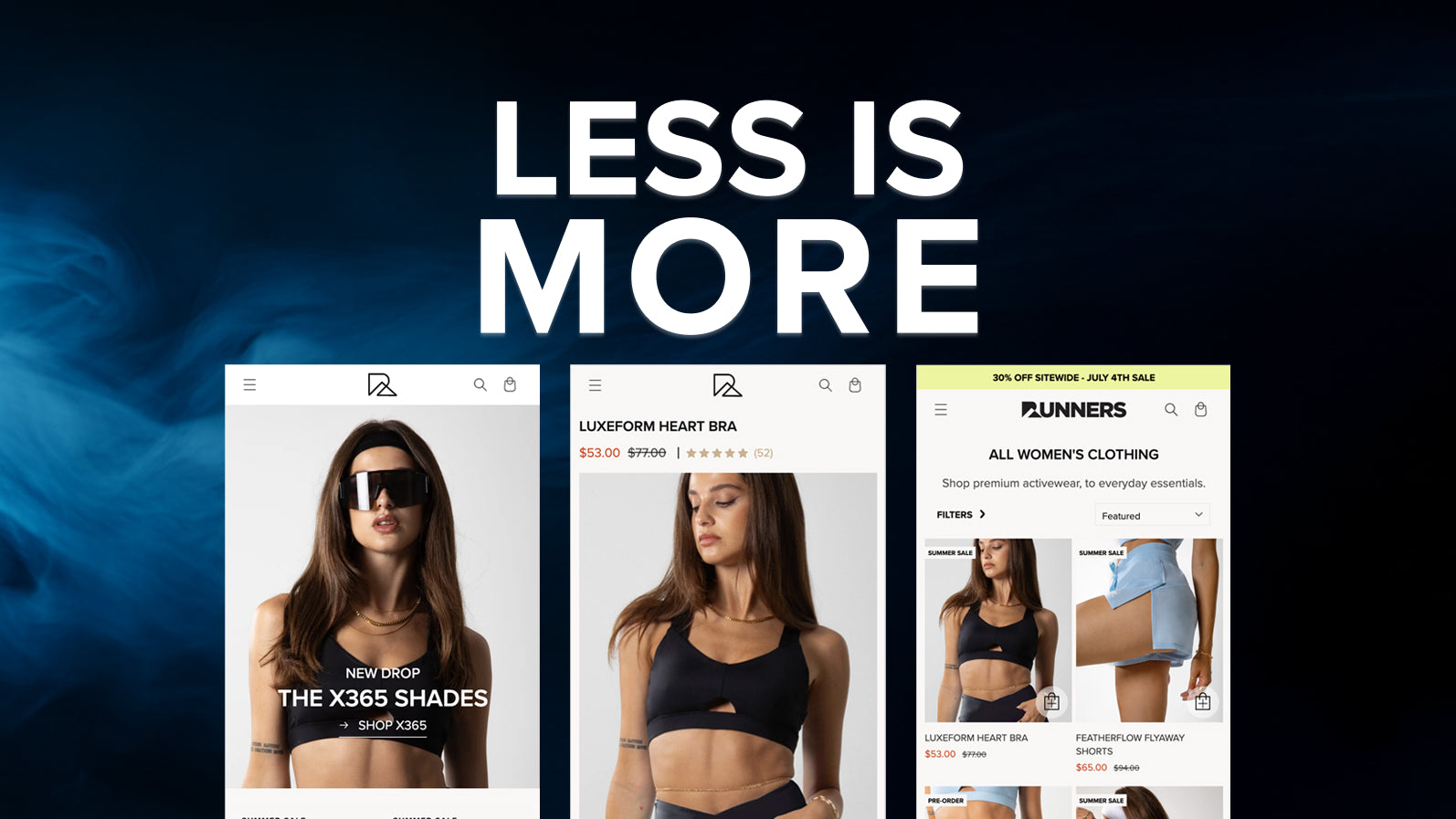At IWD Agency, we’ve spent over 15 years helping businesses build and optimize e-commerce stores that not only look great, but convert even better. From working with global brands like PayPal, Penn State, and Bobcat to supporting growing DTC businesses and B2B merchants, we’ve refined a process that delivers results. In this post, we’re sharing our exact approach for designing high-performing e-commerce websites, so you can avoid common pitfalls and set your brand up for long-term success.
Why Many Stores Underperform
One of the biggest mistakes we see is brands building what we call "Frankenstein websites,” stores that have been patched together with no clear goals, inconsistent design decisions, and too many third-party apps. This leads to clutter, confusion, and ultimately, lost conversions.
A successful e-commerce site requires a solid foundation, and that starts with a clear, strategic plan.
Phase 1: Research & Planning
Before designing a single page, we begin with comprehensive research. This includes:
- Documenting your brand story and value propositions
- Reviewing any existing brand guidelines (fonts, colors, logos)
- Analyzing direct competitors as well as best-in-class brands with similar audiences
It’s crucial to identify what competitors are doing well, what they’re missing, and how your brand can stand out. Even major players like Amazon are valuable to review; after all, they invest millions into optimization and testing. Borrowing proven UX patterns from top-tier sites can give your store a solid head start.
Phase 2: Wireframing Your Website
Once the planning is complete, we move into wireframing. This is where the blueprint of your site is created: no visuals, just structure. It outlines what content and functionality goes where, on each key page.
Too many brands skip this step and dive directly into visual design, only to discover later that their layout is misaligned with user needs. Wireframes help prevent scope creep, reduce design time, and ensure the entire team is aligned.
Some of the key wireframes we recommend creating include:
- Homepage
- Category (PLP) page
- Product detail (PDP) page
Each wireframe should be responsive and account for the most common device sizes your users rely on. For B2C, this typically means starting with mobile. For B2B, desktop is often the priority. (If you’re looking to elevate your B2B strategy, take a look at our Shopify B2B services or Adobe Commerce B2B services to learn how we can help.)
Following eCommerce Best Practices
While your wireframes should reflect your unique brand and products, it's critical not to stray too far from familiar UX patterns. Users expect certain elements, like the cart, search bar, and account icon, to be in predictable places.
Here’s what a standard high-converting layout often looks like:
- Header: Logo on the left, search bar center, cart/account icons on the right
- Homepage: Hero banner, followed by product highlights like best sellers
- Category page: Grid layout with filters on the left or top
- Product page: Images on the left, key info (price, description, add-to-cart) on the right, and supporting content below
These conventions are proven to reduce friction and improve usability across device types.
Phase 3: Visual Design
Once the wireframes are approved, we bring the site to life through full design. This is where your visual identity shines; colors, typography, photography, and other brand assets come into play.
We design each page for multiple screen sizes, typically four to five breakpoints, to ensure your site looks and performs great across all devices.
If you're working with a team, you can parallelize this stage. For instance, while development begins on the homepage, design can continue on the PDP and PLP pages. This speeds up the process and reduces bottlenecks.
One tip we always give clients: start simple. Don’t overload the site with dozens of third-party apps or custom features on day one. Focus on launching a clean, conversion-optimized experience. You can always test and expand later based on real customer behavior.
Phase 4: Development & Launch
Once the design is finalized, we hand it off to our development team. While frontend development is underway, we wrap up backend elements like system integrations, data migration, and custom business logic.
The final steps include:
- Configuring payment methods, taxes, and shipping
- Setting up transactional emails
- Rigorous QA testing across all breakpoints and user flows
Even after go-live, we conduct another round of testing to ensure everything runs smoothly in the live environment.
Final Thoughts
Launching an eCommerce site isn’t just about design; it’s about laying the groundwork for growth, conversions, and long-term success. At IWD Agency, we take a structured, proven approach to every build to ensure our clients launch faster, with fewer headaches and better results.
If you're ready to design or replatform your e-commerce website, get in touch with us today! We’re here to help guide you every step of the way.
